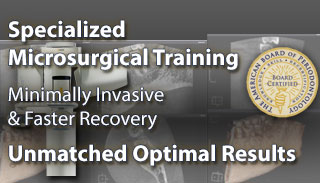
How is Periodontal Disease Treated?
Click Here to Schedule with Dr. Sanchez, Periodontist in Minneapolis, MN >>
 Scaling Calculus
Scaling Calculus
Periodontal disease is a bacterial infection that penetrates into the gums and into the bone around your teeth, causing inflammation. Periodontal inflammation leads to bone loss, and possibly tooth loss, and may contribute to other serious medical conditions.
The periodontal infection must be removed and the area given a chance to heal. There are generally two levels of treatment for this condition depending upon the severity of your infection.
Phase I: Scaling and Root Planing
| Scaling and Root Planing | |
|---|---|
 |
 |
| Scaling: The periodontist first removes the upper level of infected calculus. | Root Planing: Next, he smooths the root to reduce the ability of new bacteria to adhere. |
The surface level of infection in the pockets around your teeth can be removed using specialized instruments. This procedure is called, “Scaling and Root Planing," “Phase One Treatment" or “Initial Therapy." It is done under local anesthesia and is quite different from the routine dental cleaning that is traditionally done.
Phase II: Lower Level Infection Removal
If your infection has spread into the bone that supports your teeth and is below the level that can be reached with Phase I treatment, an additional procedure is necessary to reach and remove this deeper infection.
Traditionally, a surgical procedure would be performed to retract the gums and remove the deeper infection. Although this is still a very effective treatment option, we now have an non-surgical treatment option that uses a laser to eliminate the disease with no cutting or sutures. If you are a candidate for Laser Periodontal Therapy, treatment can actually be more effective than traditional therapy.
Click here to learn more about Laser Periodontal Therapy.
Restoring the Lost Supporting Structure
 Bone Grafting of Furcation
Bone Grafting of Furcation
Phase II treatment is typically advised when a pocket has formed under the gum. This is a result of the infection dissolving bone. If this has been caught in time and the tooth can be retained, surgery can help by reducing the pocket - sometimes, with pocket reduction surgery, bone grafting and/or guided tissue regeneration.










